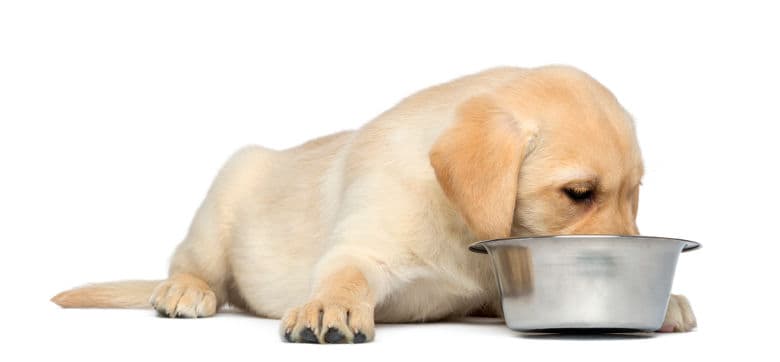
In many U.S. homes, chubby puppies are the new norm. The Association for Pet Obesity Prevention estimates that 56% of dog breeds are obese or overweight.
It’s vital to choose the right dog food to help your pet lose weight.
How to put a dog on a diet
You’ll have to decide on your dog’s target weight and calculate the recommended daily calorie intake. Then, select the right dog food, set up a routine for feeding, and strive towards reaching that weight.
Calculate your dog’s calorie intake and target weight
Most veterinarians calculate your dog’s calorie needs based on a goal to lose 2% of the initial weight of the body per week. Weight loss can vary depending on several factors. A loss of 0.5% initial body weight each week is a minimum rate.
The veterinarian will determine the target weight for your dog and how long it takes to achieve this. Your veterinarian will then suggest the right dog food to lose weight, how to calculate feeding amounts, and when to weigh your pet. Weigh-ins are usually scheduled every other week for the first couple of months. The diet of your dog will be altered based on their progress.
After your dog reaches its target weight, you will begin a new diet plan using the most effective weight management dog food. This is to help stabilize your dog’s weight.
Choose the right dog food for weight loss
When your dog’s intake of calories (through treats and food) is less than its expenditure (through maintenance and exercise), weight loss occurs. Pet parents have the responsibility of what their dogs consume and can control how many calories.
Weight loss diets prescribed by doctors are extremely effective. There are several components that you should look out for when choosing a diet to lose weight.
- Caloric and nutrient density
- Low-fat, high fiber
- L-carnitine levels
- Antioxidants
Caloric and Nutrient Density
Two factors determine the value of a weight-loss diet, and not “weight-control” or “weight-management”:
- Calories per serving of dog food
- The same serving contains a variety of nutrients
Weight loss diets for dogs aim to reduce caloric intake, resulting in weight loss. They also maintain the appropriate nutritional levels without causing any deficiencies.
You may be denying your dog the nutrients it needs if you feed less than normal or maintenance-sized portions. These diets contain all of the nutrition needed for a full-sized serving, and not just a small portion.
Increased Fiber, Lower Fat
Diets that are higher in fiber, and lower in fats promote satiety. They also have a lower calorie density. Fiber cannot be digested by dogs, and so does not add calories to their diet.
Weight loss foods are often a combination of soluble and non-soluble fibers. This promotes weight reduction without causing unpleasant side effects such as increased poop or dog food with a bad taste.
It is important to reduce the fat content in foods for dogs that are designed to help them lose weight. Dietary Fats contain more calories per gram than proteins or carbohydrates.
L-Carnitine levels in therapeutic doses
L-Carnitine, an amino acid, helps to move fatty acids more into the cells for burning as energy. It helps the dog move fat and metabolize it instead of storing it. In the ingredient list of dog foods, look for L-carnitine. You can also find it under “Guaranteed analysis” on the label.
Antioxidants
Weight loss diets are usually enriched with anti-oxidants that help neutralize the free radicals which damage our cells. These antioxidants have anti-inflammatory properties. It is beneficial for dogs that are overweight, as they experience higher levels of inflammation.
How to Create a Routine Feeding Plan for Your Dog’s Weight Loss Plan
You should work closely with your vet to develop a routine for feeding your dog that will keep them satiated and on the right track to losing weight. You can help your dog lose weight by following these tips:
- As directed by your vet, measure out exactly the amount of food you need.
- Instead of giving your dog one large meal or free choice, feed several small meals during the day.
- You should not give your pet access to human or other animal food
- Stick to only vet-approved treats
Some vet-approved, low-calorie treats include:
- Carrot slices
- Green beans
- Cooked lean meat in small amounts
- Packaged low-calorie treats
- Broccoli
How to Reach Your Dog’s Ideal Weight through Exercise
The most important aspect of losing weight for a dog is to control the amount and type of food consumed. However, increasing the caloric expenditure (burning calories) can help the process along.
Before starting an exercise program, talk to your vet about the unique abilities and needs of your dog. Your vet will make adjustments to your dog’s diet and routine at their weigh-ins in order to achieve a weekly weight loss of 1 -2 %.
Most dogs will lose weight in steps. They may drop a lot of pounds over two weeks, but then gain it back over the following two. Diet plans will not be changed if the weight does not change at both consecutive examinations.
How to Maintain Ideal Weight
It is important to monitor your dog’s weight every month after he has reached his target weight. This will ensure the weight remains ideal. Even after your dog has finished the diet, treats that are approved should not exceed 10% of their total daily caloric intake.